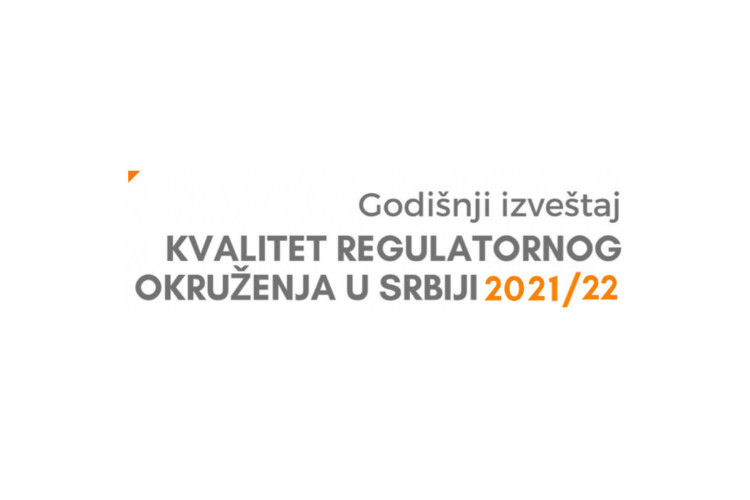Regulatory Index of Serbia
At the end of 2012, NALED created an objective indicator of the quality of the business environment in our country - the Regulatory Index of Serbia (RIS), and since then, the quality of the regulatory environment has been monitored using this indicator. RIS is a quantitative, summary indicator of the transparency and quality of the legislative process, the promptness of the state in law enforcement, the predictability and competitiveness of the regulatory environment.
Information about regulations and changes in regulations is of crucial importance for economic entities, considering that they shape the rules of business on the market. The creation of a business environment stimulating for the development of the economy implies the fulfillment of several important prerequisites, among which the key ones are: predictability and stable economic policy without frequent and sudden changes and greater legal certainty, which is reflected in the consistent application of the law, efficient administration and transparent communication with state authorities. Precisely because of this, NALED formulated the Regulatory Index of Serbia - RIS with the aim of providing insight to both members and the general public into the manner and quality of the adoption and implementation of regulations in Serbia.
The RIS consists of six components, and each of them follows a certain phase of the adoption of the law:
- The plan for amending and enacting laws, which should ensure the predictability of changes to the legal framework in the Republic of Serbia (Component 1);
- Analyzes of the effects before the adoption of regulations (ex ante analyses), which contribute to the validity of decisions, that is, the adoption of regulations with the best ratio of costs and benefits (Component 2);
- The quality of involvement of interested parties, which shows the level of transparency of the procedure for the preparation and adoption of laws (Component 3);
- The method of implementation of the law, first of all the efficiency and timeliness of passing by-laws that enable the operational implementation of regulations (Component 4);
- Openness of institutions during the implementation of the law, which shows whether and how open the institutions are to solving doubts regarding the law in their jurisdiction during the implementation of regulations (Component 5);
- Monitoring the effects of the law, i.e. monitoring the regulatory burden imposed by the law and possible problems in implementation that may lead to a new change in regulations (Component 6).

The total value of RIS for the year 2024/25 is 50 out of a possible 100 points, representing a decline compared to the previous year, when the index stood at 55 points. Given the change in methodology, the results are comparable with the previous RIS report. Detailed methodology can be found in the NALED publication database available at www.naled.rs.
Some of the key results of this year's report are:
- The highest-scoring components in 2023 were Institutional Responsiveness (Component 5) and Quality of Regulatory Drafting (Component 2), with 72 and 64 points, respectively.
- The lowest-scoring components in 2023 were Timeliness in Law Enforcement (Component 4) and Predictability of Law-Making (Component 1), with 27 and 44 points, respectively.
- Public Participation in Regulatory Drafting (Component 3) saw the most significant drop in 2024 compared to the previous year, now standing at 45, which is a decrease of 14 index points from last year’s score of 59.
- The Quality of Regulatory Drafting (Component 2) is the only component that recorded an increase—albeit by just one index point—compared to last year’s results.
Related Content
Annual report: Regulatory Environment Quality in Serbia
23.09.2020
The expert team of NALED’s Executive Office has prepared a new report in...Read moreAnnual report: Regulatory Environment Quality in Serbia 2021/22
29.06.2022
Stručni tim Izvršne kancelarije NALED-a pripremio je novi...Read moreThis website uses cookies to ensure the best user experience. By continuing to browse the site, you consent to the use of cookies.
CONTINUE LEARN MORE

